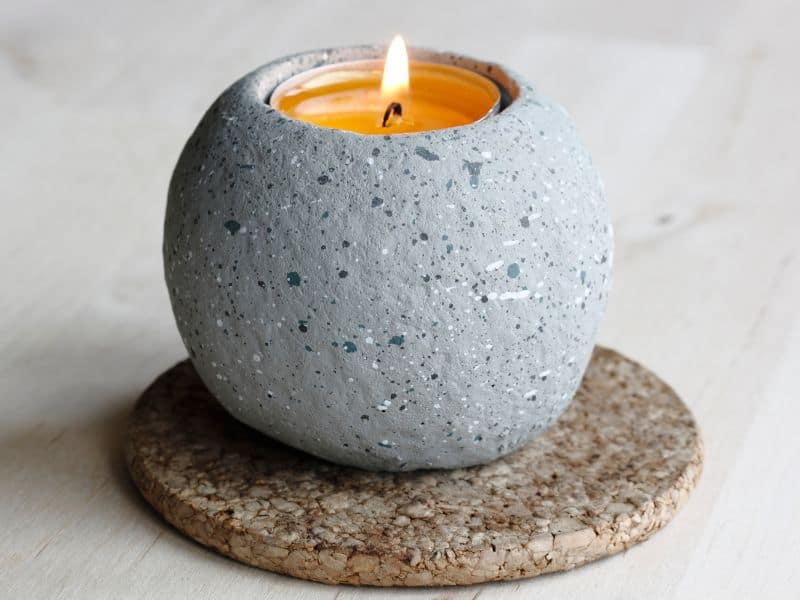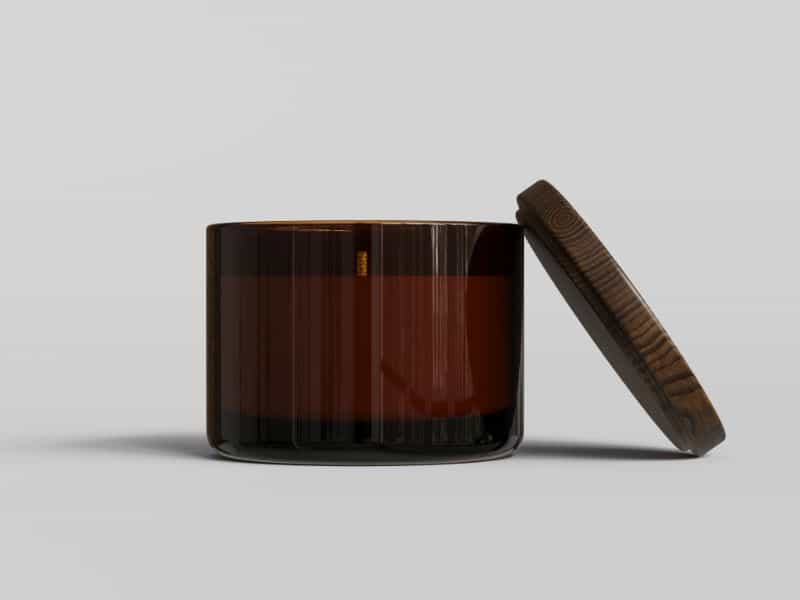Have you ever wondered about the lifespan of your favorite candle? How many cozy evenings will its soft glow accompany you? The answer isn’t as simple as you might think. It depends on many factors, such as the size of the candle, the materials used, and even the type of wick. So, let’s delve into the fascinating world of candles and discover how long does the average candle last?
The average 8-ounce candle can burn for approximately 40-55 hours. For every ounce of wax, a candle can burn approximately 6-7 hours. So, a standard 10-ounce candle might last between 60 to 70 hours. However, numerous factors like size, material, and wick type can influence this.
Following this average, you can estimate the lifespan of different candles based on their weight. For instance, a small tea light candle, weighing approximately half an ounce, will typically last for about 3 hours.
On the other hand, a larger pillar candle, weighing around 20 ounces, could provide around 120 hours of light. These estimates can help you plan your candle usage and make the most of their illuminating presence.
Factors Impacting Candle Lifespan
Did you know a candle’s size has a big effect on how long it lasts? A small candle burns faster than a large one. That’s because larger candles have more wax. More wax means a longer burn time.
The material of the candle also plays a role in its lifespan. Most candles are made of paraffin, beeswax, or soy. Paraffin candles tend to burn fast. On the other hand, beeswax and soy candles burn slower.
The wick type is another factor to consider. Cotton wicks are common and tend to burn at a steady pace. Wood wicks burn slower, but they need to be used correctly.
Estimating Average Candle Lifespan
So, how can you guess a candle’s lifespan? A handy trick is to check the candle’s weight. For every ounce, a candle typically offers 6 to 7 hours of burn time. For example, a 10-ounce candle should last between 60 and 70 hours.
Now, let’s look at some common candle sizes. A tea light usually weighs about half an ounce. So, you can expect it to last 3 to 4 hours. A typical pillar candle weighs around 20 ounces. So, it should burn for about 120 to 140 hours.
| Candle Type | Average Burn Time |
|---|---|
| Tea Light | 3-4 hours |
| Votive Candle | 8-10 hours |
| Small Jar Candle (10 oz) | 60 hours |
| Large Jar Candle (20 oz) | 120 hours |
| Pillar Candle (3×6 inch) | 70-90 hours |
| Beeswax Candle (3×3 inch) | 60-70 hours |
| Soy Candle (10 oz) | 50-60 hours |
| Taper Candle (10 inch) | 8-10 hours |
Please note, the burn times are averages and can vary depending on the specific brand, the environment, and how the candle is cared for.
Optimal Burning Duration for Candle Longevity
It’s not only how you burn your candle, but also how long you burn it each time that can influence its overall lifespan. To maximize candle life, you need to balance between getting the most from each burn and preventing the candle from burning too quickly.
When you first light your candle, aim to let it burn long enough to form a full melt pool. This means the liquid wax reaches the edge of the container or the candle itself. Depending on the size of your candle, this could take anywhere from 1 to 3 hours. This practice helps prevent tunneling and allows the candle to burn more evenly and efficiently.
However, even with this in mind, it’s not best to keep your candle burning for too long. A good rule of thumb is to not exceed 4 hours of burning time in one go. After this point, the wick can start to mushroom, leading to excess smoke and soot. Also, the candle may get too hot, causing it to burn faster.
So, to get the most out of your candles, let them burn long enough to form a full melt pool each time, but try not to keep them lit for more than 4 hours at a stretch. With this practice, you can make your candles last longer and enjoy their soothing light for many more hours.
Extending Candle Lifespan
Correct usage can significantly extend your candle’s burn time. A helpful tip involves the wax melt pool. This is the layer of liquid wax that forms when you light a candle. For the best results, allow this pool to reach the candle’s edge each time you burn it.
Doing so prevents what is known as “tunneling.” This is when the candle burns down the middle, leaving a ring of hard wax around the outside. Tunneling reduces the overall lifespan of your candle, and allowing a full melt pool to form helps avoid it.
The length of your candle’s wick also plays a vital role in its lifespan. Before you set your candle alight, trim the wick down to about 1/4 inch. This might seem short, but a longer wick causes the candle to burn too fast. It can also produce more smoke, which isn’t good for indoor air quality. Trimming the wick ensures a slower, cleaner burn, helping your candle last longer and keeping your home’s air cleaner.
So, remember these simple tips: let the melt pool form, and keep your wick trimmed. This way, you can enjoy your candle’s glow for many more cozy evenings.
Long-Burning Candles: A Buyer’s Guide
For those who desire a candle that can illuminate for many hours, certain options on the market are designed to burn for an extended time. These candles are crafted with specific features that enhance their longevity.
One type of long-lasting candle is the pillar candle. These candles are thick and tall, and they contain a large amount of wax. The size of these candles allows them to burn for many hours, sometimes even up to 100 hours or more, depending on their size.
Beeswax candles are another option for those seeking a long burn time. Beeswax burns slower than other wax types, which extends the candle’s lifespan. Additionally, beeswax is a natural and sustainable wax option that produces less soot and no harmful chemicals.
Soy candles are another long-burning option. They’re made from soybean oil, a renewable resource, and burn cleaner and slower than traditional paraffin candles. A large soy candle can provide light and scent for up to 50 hours or more.
Finally, some candles are designed with multiple wicks. While multiple wicks will cause the candle to burn down faster, they create a larger pool of melted wax, which releases more fragrance into the air. These candles are designed for long, luxurious burning sessions.
When buying a long-lasting candle, pay attention to the burn time listed on the product. Remember, proper candle care, like trimming the wick and allowing a full melt pool to form, can also help maximize your candle’s lifespan, no matter what type of candle you choose.
Common Myths about Candle Lifespan
There are many myths about candle lifespan.
One common myth is that freezing a candle before use makes it last longer. In reality, freezing can cause the wax to crack. This can lead to an uneven burn.
Another myth is that metal-core wicks burn slower. The truth is, these wicks often burn hotter and faster than cotton wicks. Plus, metal-core wicks can release harmful fumes.
As you can see, it’s best to stick to facts when it comes to candle use and lifespan. With the right care, your candles can last longer and burn safer.
Impact of Environment on Candle Lifespan
The setting where you burn your candle can dramatically impact its burn time. Wind, for instance, is a major factor. It can cause a candle to flicker and burn more rapidly.
This is especially true for candles used outdoors where breezes are more common. But even indoors, drafts from windows, doors, or air conditioning can cause the same effect. To maximize your candle’s lifespan, find a spot away from drafts where the flame can remain steady.
Temperature also plays a significant role in a candle’s lifespan. Warm conditions can cause a candle to soften or even start to melt before you light it. This pre-melting can lead to a shorter burn time once you do light the candle. Additionally, in very hot conditions, a lit candle might burn faster than usual. To prevent this, store and use your candles in a place that’s cool and dry.
So, the next time you plan to light a candle, consider its location carefully. A sheltered spot at room temperature can help your candle burn slower and last longer, giving you more time to enjoy its warm glow.
Sustainable Candle Choices for Longer Lifespan
Sustainable candles can be a great choice for a longer lifespan. For instance, beeswax candles burn slower than most. Plus, they’re natural and don’t produce harmful fumes.
Soy candles are another great choice. They’re made from soybean oil, which is a renewable resource. Soy candles also burn cleaner and slower than paraffin candles.
Choosing sustainable candles not only helps your candles last longer. It also helps the environment. Sustainable candles produce less soot and harmful chemicals. This makes the air in your home cleaner and safer to breathe. Plus, you’re supporting renewable resources and reducing waste. It’s a win-win!
Frequently Asked Questions
Larger candles usually last longer because they contain more wax. For each ounce of wax, a candle can provide about 6 hours of burn time.
Common types of candle wax include paraffin, beeswax, and soy. Paraffin candles burn the fastest, while beeswax and soy candles tend to burn slower, thus lasting longer.
Allowing the wax to melt across the entire top layer each time you light the candle can help prevent “tunneling,” which can reduce a candle’s lifespan.
In a hot room, a candle can start to melt before it’s lit, which can shorten its lifespan. Therefore, it’s recommended to keep your candles in a cool, dry place.
Beeswax and soy candles are sustainable options that can last longer. Beeswax candles burn slower and don’t produce harmful fumes, while soy candles are made from renewable resources and burn cleaner and slower than paraffin candles.
Conclusion
In conclusion, the lifespan of a candle isn’t a mystery. It depends on a variety of factors like size, materials, wick type, and even the environment where it’s burned. By understanding these factors and practicing proper candle care, you can extend your candle’s glow for many more cozy evenings.
Whether you’re choosing a small tea light for a dinner party or a large pillar candle for quiet nights at home, this knowledge can help you make the most of your candles.






